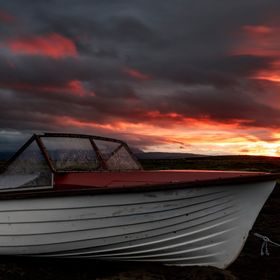
FBphotography
FollowThis shot is the result of a long process of tracking and stacking. It was compiled using Deep Sky Stacker, the polaris Vixen tracker and a Tamron 150-600mm mou...
Read more
This shot is the result of a long process of tracking and stacking. It was compiled using Deep Sky Stacker, the polaris Vixen tracker and a Tamron 150-600mm mounted on a Canon 6D.
Read less
Read less
Views
430
Likes
Awards
Winner in Only detailed astro-element (s) Photo Challenge
Categories
Same photographer See allBehind The Lens
Discover more photos See all
Behind The Lens
Location
I took this picture in l'Ile d'Yeu, France. It was my first try at deep sky astro photography.Time
Like with any astro shot, you tend to take them at night! This was probably somewhere between 2AM and 4 AM on a cold, dark and lonely night!Lighting
There is not so much to say about lighting. The only thing worth mentioning is that when photographing such faint objects (that you can barely see with your own eyes), you tend not to see the results before you get to the postprocessing stage. Anticipation at its finest!Equipment
I used a Tamron 150-600 (@600mm) mounted on a Canon 6D, itself mounted on a Polarie star tracker. The longest part of the process is to get the star tracker properly aligned on the earth axis of rotation. When done properly and with a relatively wide lens, you can reach minutes of exposures and still get pin sharp stars. With such a heavy lens and long focal length, I could only manage single exposures of 2 or 3 seconds. I had to crank up the ISO to 102400 (yes, you read it right, 102400), to get a proper signal.Inspiration
I love astro photography, the fact that you can exceed the eyes vision and reveal whats shining above our heads every night. Space is a rich source of beautiful imagery which, with a bit of technique and patience, will reward you with amazing images.Editing
Yes, oh yes. The majority of the work is done on the computer when dealing with astro shots. I took probably 200 shots of my subject (call them light frames) and 200 with the cap on (call them dark frames). After stacking them on Deep Sky Stacker (enhances the signal of each star and evens out the random ISO noise), I subtracted the sensor noise captured in the dark frames. This explains why I got a noise free image. Stacking works like a charm! (For those who do not want to use DSS, median stack in photoshop works well) There was not much to do color wise, the ridiculous ISO speed I had to use left little chance to colors. I just did some basic adjustments in Lightroom, deepening the blacks, sharpening the dust lanes and getting a correct white balance.In my camera bag
I carry my 6D everywhere. It is usually mounted with a 70-200mm f/2.8 L or a 16-35mm f/4 L IS. Whenever I'm going to shot wildlife, I also bring my Tamron 150-600mm just to get this extra reach. A recent addition to my kit was my dad's old Leica R7, which came perfectly functional with a few lenses (50mm f/1.2, 35mm f/1.4, 90mm f/1.2 and 180mm f/2) which I use for black and white photography. Going to the darkroom and making the prints yourself is really rewarding! I'm planning on going to the US in september. A 10 day backcountry trip in Utah and Yosemite. I am unfortunately going to get rid of my trusty 6D and get myself a 5DS R. As I mainly shoot landscapes, the average low light capabilities of the 5DS R won't be much of a hindrance. I am also going to sell my Tamron and a Sigma 28mm f/1.4 to get the new canon 100-400mm f/4-5.6 L IS USM MK II. I hope this will crank my image quality up a notch!Feedback
Be willing to sacrifice sleep, be cold and bored. It's a technical form a photography, it's not so much about the magic of the moment. Be sure to get your alignement right (if using a star tracker), or to use a fast enough shutter speed to get pin sharp starts. The basic rule is the 500 rule. You can leave you shutter open "500/focal length" seconds before getting trails. For instance, if you are using a 50mm, it means you can leave the shutter open 10 seconds. (some use the 600 rule, but that's a matter of preference). Also, its better to use a fast lens, as it won't require as much exposure time or ISO speeds, but do not use them wide open unless your subject is dead center and you intend to crop it. The edges can get really soft wide open, and you get these horrible comas instead of pin point stars! Hope that helps!












































